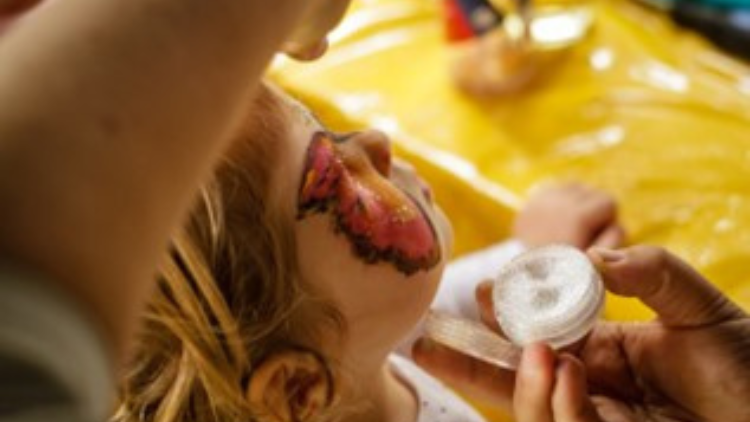Shanti Flynn, PACEY Trustee and Head of Education at Storal
Many of the children in settings today have spent much of their life under unique circumstances, where their movements where restricted and it is likely that they had less social interactions; not just with wider family and friends, but there were limitations to groups in the community and experiences like eating out and swimming We know the impact of the pandemic had on many of these children’s communication and language skills, we see it every day in our settings. It is a good time to revisit the importance of developing children’s communication and language skills in our settings and to ensure that we care doing all we can to support children.
We know that communication and language and the development of children’s spoken language underpins all areas of children’s learning and development. Speech, language and commination is the key to unlocking the skills needed for lifelong learning and can often described as the central skill for life.
Complex skills
Speech, language and communication are complex skills which interact greatly with each other and are not just about talking. Try and remember a time when you learnt a new skill? Did someone explain it to you, or did you look it up in a book or on the internet? Any of those examples need more than ‘talking’. Communication includes listening, paying attention, understanding and getting your message across. Listening and understanding are crucial to successful interactions.
During the first three years of life, the brain undergoes its most dramatic development, forming more neural connections than at any other time period.
When this early development isn’t nurtured, the brain’s architecture is adversely affected and young children fall behind in their development and learning. A major ingredient of this developmental process is the “serve and return”—or back-and-forth communication exchange between infants and parents and other caregivers. Because babies can’t talk at birth, their communication includes eye contact, facial expressions, crying, laughing, touch, and more
When an infant or young child babbles, gestures, or cries, and an adult responds appropriately with eye contact, words, or a hug, neural connections are built and strengthened in the child’s brain that support the development of communication and social skills. Much like a lively game of tennis, volleyball, or Ping-Pong, this back-and-forth is both fun and capacity-building. When caregivers are sensitive and responsive to a young child’s signals and needs, they provide an environment rich in “serve and return” experiences.
Watch this video from the Center on the Developing Child at Harvard University about how Serve & Return Interaction Shapes Brain Circuitry
Building vocabulary
Children need to hear words in context to be able to build their vocabulary. They need to learn how to label things in the world around them and it is important that as professionals, we use the correct terminology, dogs rather than doggies, cats rather than meow meows. Acknowledge children’s attempts positively but reinforce the correct word. It’s not just about learning the names of objects, it’s about the ability to label feeling and emotions, learning how to us adjectives. It’s all a rather complex process and imagine how much harder this all is if you have additional needs or English is not your first language!
Quality or Quantity
Is it just about building a large word bank, or is it how we build that word bank? The quality and the quantity of spoken language that children hear in interactions with caregivers during the early years of life are important influences on language development. So, the way we interact with our children can have an impact on their development. Ask yourself these questions:
- Do we move ourselves so that we are at face level with our children when communicating with them so that they can also see our facial expressions?
- Do we ensure that we give meaningful responses to children’s attempts at communicating with us – both verbal and non-verbal to facilitate back and forth interactions?
- Do we give children time to respond and do we model thinking (saying out thoughts out loud) in our responses?
- Do we always ask questions and expect an answer? Sometimes commenting or making a statement can spark a conversation.
Routines
What are the routines of our days in our early years settings?
Care routines such as nappy changing, toileting and nap time are great opportunities to have one to one time with children and support their communication and language skills through positive interactions.
Mealtimes should not just be time to refuel. Think about the occasions when we enjoy meals with family and friends. When given time and thought, children’s mealtimes can develop should be used to encourage independence and develop communication and social skills. Are adults engaged in conversations with the children or are they busy sorting out cutlery, water etc?
Environment
The environment in which children play and learn not only provides but can also increase the opportunities for communication, using and understanding language.
Do you have music playing loudly in the background? Do we disregard this rule at Christmas?
Stand back and look at your environment. Are there areas which lend themselves to where good talking takes place? What is it about the area? Are there interesting resources or provocations or is it that there is an educator supporting talk in this area.
Are some areas just throughfares? Is the book area near one of these thoroughfares? Are books only in your book area?
How can you enhance other areas? Are they cosy and encourage adults and children to be comfortable so that conversations can take place? Are adults always at a different height to children or uncomfortable crouched down to the child’s level?
Remember that talking does not happen all of the time. During certain activities, children need to listen to instructions or be directed to acquire new knowledge and skills.
Listening is also part of language development. It is crucial we give children a time to process the word and build their vocabulary, as well as learn about language structures.
CEY smart courses
Further your learning by doing our bite-sized training developed in association with Speech and Language UK.
Available to all: ‘An introduction to speech, language and communication (SLC) in the early years’
Exclusive for PACEY members in the Communication station theme:
- Understanding and recognising speech, language and communication needs (SLCN) in the early years
- Supporting children with speech and language challenges
About the author
Shanti Flynn is Head of Education at Storal, a group of award-winning nurseries across the UK. Shanti began her career in early years as a teacher over 25 years ago, and has worked as a LA advisor, Area SENCo, Ofsted Inspector and Head of Education and Childcare. She has proven experience in leading teams to deliver excellent care and education so that our young children achieve the best possible outcomes.



